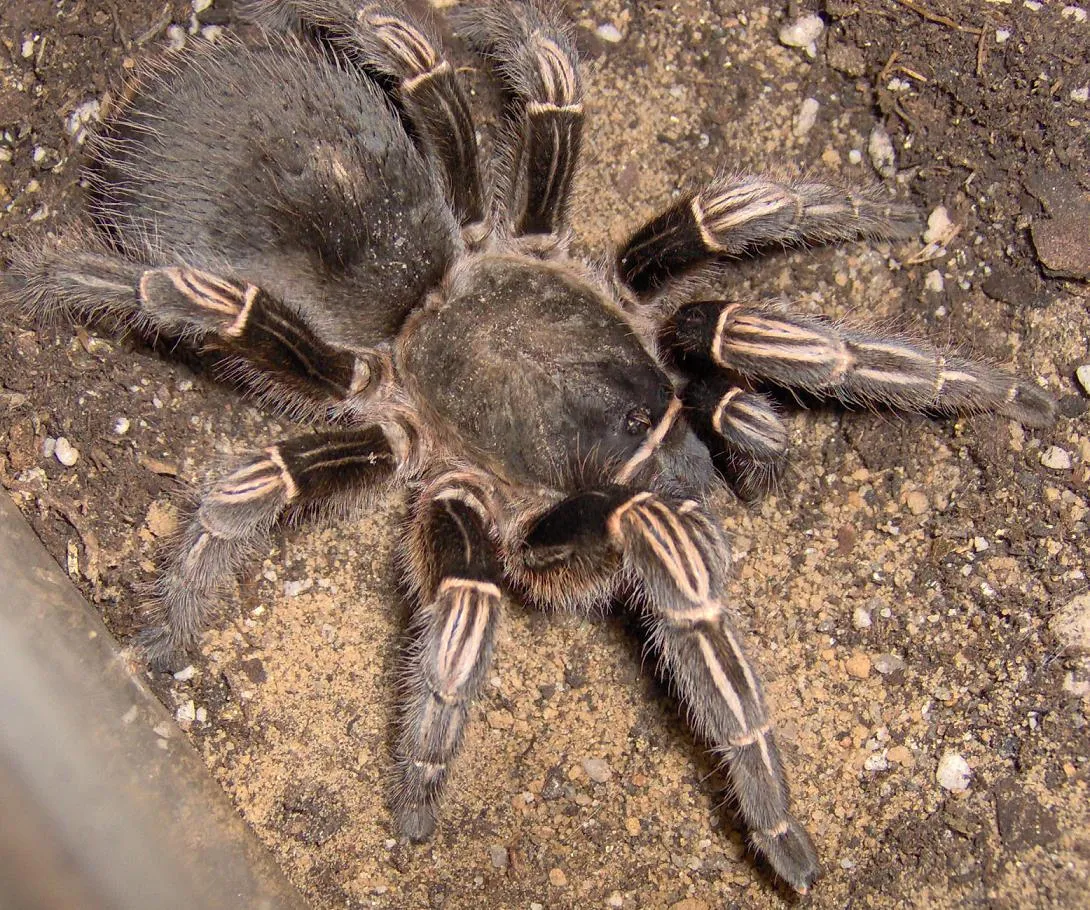Understanding the Stripe Knee Tarantula (Aphonopelma seemanni)
The Stripe Knee Tarantula, scientifically known as Aphonopelma seemanni, is a popular choice for tarantula enthusiasts due to its striking appearance and relatively docile nature. Native to Central America, these spiders are known for the distinctive black and white stripes on their legs, giving them their common name. Understanding this species is the first step toward safe and responsible handling. Their size, typically reaching a leg span of 5-6 inches, and their temperament are key factors in handling considerations. This introductory understanding sets the stage for the rest of the article, emphasizing that safe handling is always the priority. It is important to understand the animal you are handling before attempting any interaction.
Appearance and Characteristics of Stripe Knee Tarantulas
Stripe Knee Tarantulas are visually striking creatures. Their most defining feature is the bold black and white banding on their legs, which contrasts sharply with their overall body color, which is typically a dark brown or black. The carapace, or the upper shell, can range from a lighter brown to a darker shade depending on the individual and its age. Their bodies are covered in fine hairs, which serve sensory and defensive purposes. Understanding these visual characteristics is crucial for identification and appreciating the spider’s beauty. These tarantulas also possess chelicerae, which are the mouthparts used for biting, and pedipalps, which are used for sensory functions and handling food. Recognizing these features will help you better understand and appreciate these fascinating creatures.
Temperament and Behavior of Stripe Knee Tarantulas
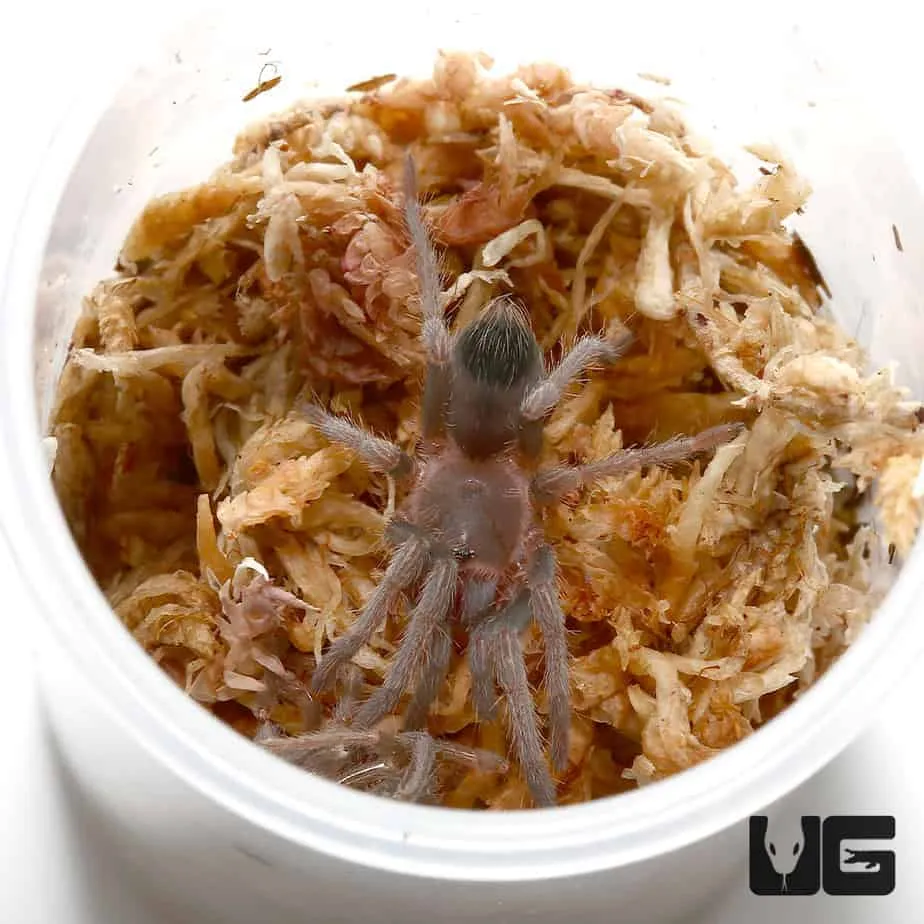
Generally, Stripe Knee Tarantulas are considered to be a docile species. However, their temperament can vary depending on the individual spider and its current state. While they are less likely to bite than some other tarantula species, they can still be defensive. They are more likely to run and hide or flick urticating hairs (small, irritating hairs) as a defense mechanism. Understanding their behavior, including their tendency to be skittish, is key to predicting their reactions during handling. They are generally not aggressive but will defend themselves if they feel threatened. Always approach them with caution, and never assume they will be friendly. Always observe the spider’s body language, such as raised legs or defensive postures, as these are indicators that the tarantula is feeling threatened or stressed.
Preparing for Stripe Knee Tarantula Handling
Before attempting to handle a Stripe Knee Tarantula, careful preparation is essential. First and foremost, assess the spider’s current condition and behavior. Is it eating well? Is it showing signs of stress, such as excessive hiding or defensive postures? Handle only when the spider appears calm and healthy. Next, ensure you have a clear workspace, free from distractions. This will help prevent accidental dropping or injury to the tarantula. Handling should be done in a controlled environment with a soft surface in case the tarantula falls. Never handle a tarantula if you are not calm and focused. Your anxiety can be sensed by the tarantula and may provoke a defensive reaction. It is always best to observe and to learn the spider’s habits before attempting to handle it.
Essential Equipment for Handling
While handling Stripe Knee Tarantulas, it is crucial to have the right equipment. This minimizes risk to both you and the spider. First, consider using a soft, wide container. This will be a safe area should the spider fall. Long tweezers or tongs can be used to gently guide the spider, minimizing direct contact. Have a soft brush ready to redirect the spider if needed. A small, clear container can be used to gently coax the tarantula if it is reluctant to move. Always keep the enclosure nearby. If the tarantula becomes agitated, it can be quickly and safely returned to its home. It’s also wise to wear gloves and wash your hands before and after handling to avoid contamination. Ensure all equipment is clean and disinfected.
Creating a Safe Handling Environment
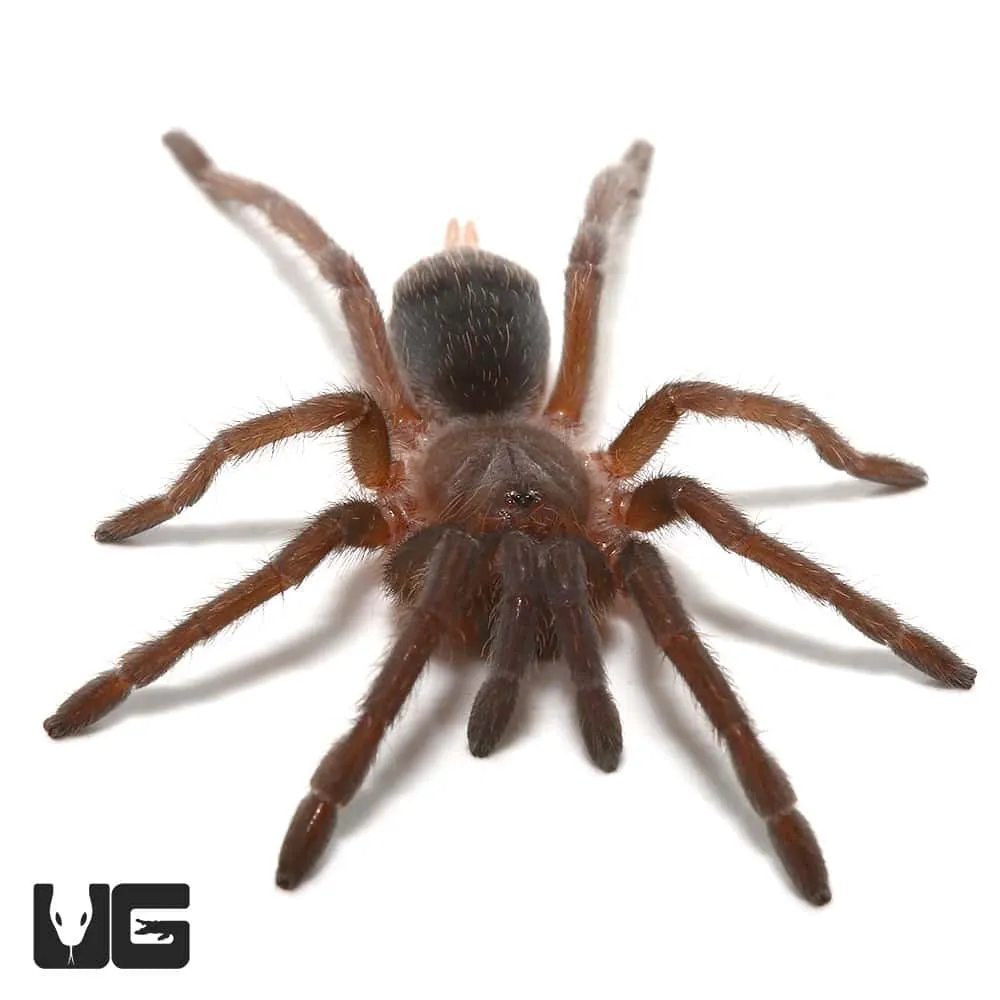
The handling environment plays a pivotal role in safety. Choose a flat, uncluttered surface, preferably at or near ground level, in case of a fall. The area should be well-lit so you can clearly observe the spider’s behavior. Avoid handling near windows, open doors, or other potential escape routes. Ensure the room is free from any hazards, such as small objects or electrical cords. Always handle over a soft surface, like a bed or a large cushion, to mitigate the risk of injury if the spider falls. Minimize any sudden movements or loud noises to avoid startling the tarantula. A calm environment helps keep both you and the spider relaxed, reducing the likelihood of a defensive reaction. It is also recommended to have an assistant on hand in case of emergencies.
Step-by-Step Guide to Handling a Stripe Knee Tarantula
Handling a Stripe Knee Tarantula safely requires patience and a methodical approach. Begin by observing the tarantula in its enclosure. If it appears calm and relaxed, slowly open the enclosure. Gently coax the tarantula to move onto your hand, using a soft brush or your hand as a guide, rather than trying to grab or force it. If the tarantula is hesitant, allow it to come out at its own pace. Avoid quick movements. Once the tarantula is on your hand, support its body gently, ensuring it feels secure. Keep your movements slow and deliberate, always being mindful of the tarantula’s posture and behavior. Have a plan for returning the tarantula to its enclosure if it becomes agitated.
Approaching the Tarantula
Approach the tarantula with patience and calm. Speak softly to it, as vibrations can be felt by the spider. Open the enclosure slowly. Avoid making any sudden movements. Observe the tarantula’s posture. If it is in a defensive stance, postpone the handling session and try again later. When you’re ready to start the process, gently position your hand or a soft brush in front of the tarantula. Allow the tarantula to come to you, rather than trying to force it. Watch its movements carefully. Make sure the tarantula does not appear to be stressed or anxious.
Lifting and Holding the Tarantula
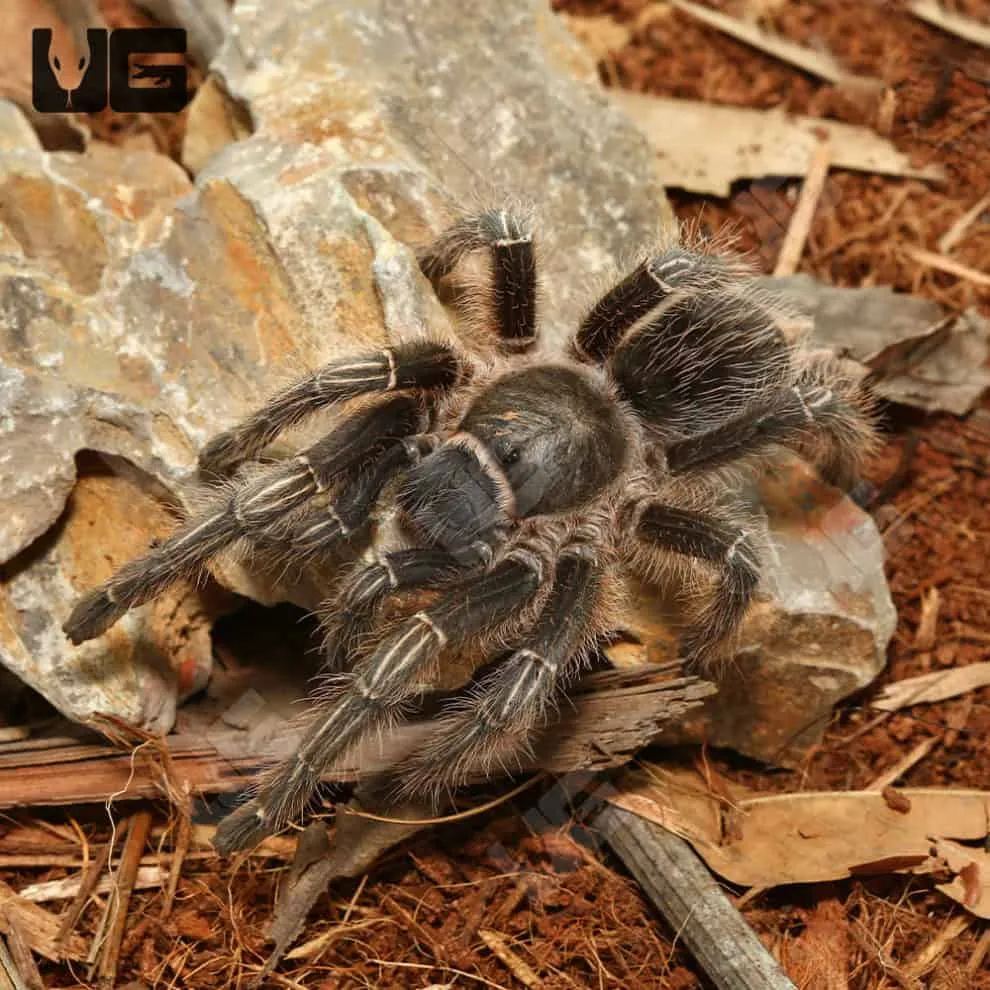
Once the tarantula begins to move, gently encourage it onto your hand. Support its body with your other hand, ensuring it feels secure and supported. Avoid squeezing the tarantula. Hold your hand close to the ground to minimize the distance of any potential fall. Move slowly and deliberately. Be mindful of the tarantula’s position and reactions. If it starts to move quickly or appears agitated, gently place it back into its enclosure. Always keep a watchful eye on the tarantula. Ensure the tarantula feels safe at all times.
Returning the Tarantula to Its Enclosure
Returning the tarantula is as important as the initial handling. Gently guide the tarantula back into its enclosure. Position your hand near the substrate, allowing it to walk off on its own. Avoid dropping or forcing it back. Once the tarantula is inside, close the enclosure carefully and observe its behavior. Make sure it has settled comfortably. The return process should be as stress-free as the initial handling. Be patient and give the tarantula time to adjust. Handle the tarantula with care and respect, every single time.
Important Safety Precautions
Even with careful handling, precautions are essential. Always wash your hands thoroughly before and after handling the tarantula. Never handle a tarantula if you have open wounds on your hands, as this could increase the risk of infection. Keep handling sessions short. Extended handling can stress the tarantula. Supervise children closely if they are involved in any aspect of tarantula care. Always keep the tarantula’s enclosure secure to prevent escape. Avoid handling a tarantula if it is molting or about to molt, as they are very vulnerable during this period. Always wear gloves if you have any concerns about being bitten or being exposed to the urticating hairs.
Minimizing the Risk of Bites
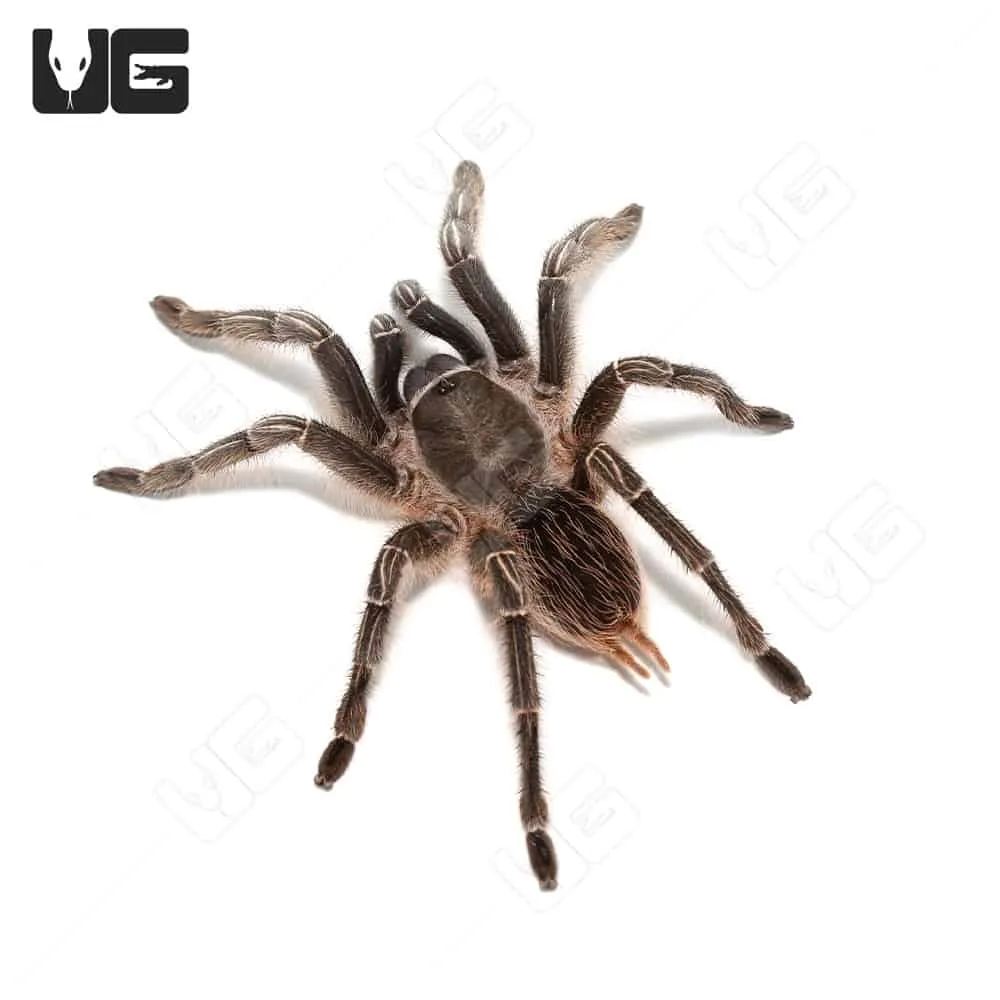
While Stripe Knee Tarantulas are not particularly aggressive, bites can still happen. To minimize the risk, never make sudden movements or try to grab the tarantula. Always approach it calmly. If the tarantula is in a defensive posture, such as rearing up on its hind legs or displaying its fangs, do not attempt to handle it. Allow it time to calm down. Do not put your fingers or hands directly in front of the tarantula’s fangs. Avoid provoking it. Always be aware of the tarantula’s body language and adjust your actions accordingly. Regular observation of the tarantula’s behavior helps you to recognize any warning signs. Keeping a safe distance is key to preventing a bite.
First Aid and Emergency Procedures
In the event of a bite, remain calm and assess the situation. Stripe Knee Tarantula bites are not generally considered life-threatening, but they can be painful. Clean the bite area thoroughly with soap and water. Apply a cold compress to reduce swelling and pain. Seek medical attention if you experience severe symptoms like allergic reaction, difficulty breathing, or excessive swelling. Keep the area clean and monitor it for signs of infection. If you are bitten, try to remain calm and do not panic. Be ready to provide information to medical professionals, if needed, such as the type of spider and the circumstances of the bite. For urticating hairs exposure, do not rub the affected area. Flush the eyes immediately with water.
Post-Handling Care and Observation
After handling, observe the tarantula carefully for any signs of stress or injury. Watch for changes in its behavior, such as a loss of appetite or a retreat to a specific area of the enclosure. Ensure the enclosure is in optimal condition, with appropriate temperature, humidity, and substrate. Provide fresh water and a nutritious diet. Allow the tarantula to rest and recover from the handling session. Document any unusual behavior, and consult with a veterinarian or experienced tarantula keeper if you have concerns. Ongoing observation and care are essential for the well-being of your Stripe Knee Tarantula. Always take note on the spider’s habits and its behavior.
Assessing Your Tarantula’s Behavior
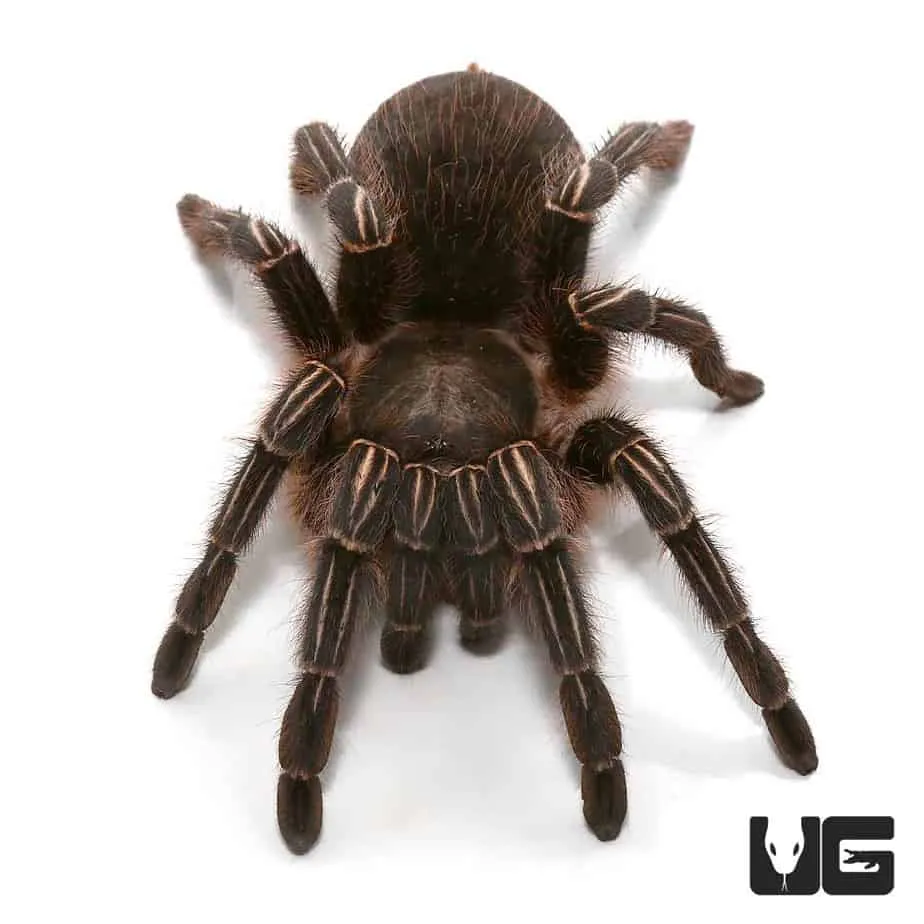
Regularly observe your Stripe Knee Tarantula to understand its normal behavior patterns. This will help you recognize any changes that might indicate stress or illness. Observe its feeding habits, activity levels, and how it interacts with its environment. A healthy tarantula will typically be active, eat regularly, and have a good appetite. Changes in these behaviors, such as a refusal to eat, lethargy, or excessive hiding, may indicate a problem. Note the tarantula’s posture and body language. Is it defensive, or does it seem comfortable in its enclosure? Regular assessment of the tarantula’s behavior enables you to provide the best care possible.
Recognizing Signs of Stress
Recognizing signs of stress is crucial for your tarantula’s well-being. These can include excessive hiding, refusing to eat, a hunched posture, or flicking urticating hairs. If the tarantula is constantly hiding, it may be stressed. Similarly, if it is not eating, it could be due to stress or illness. The tarantula’s posture can also indicate stress; a hunched posture is a sign of feeling threatened. Flicking urticating hairs is a defensive behavior, so the tarantula is trying to protect itself. If you notice any of these signs, minimize handling and review its enclosure’s setup to ensure it meets its needs. Address any issues promptly to prevent the stress from escalating and potentially harming the tarantula.
Handling Frequency and Duration
Limit handling frequency to avoid stressing the tarantula. Handling should be done only when necessary, such as for enclosure maintenance or health checks. Even if the tarantula appears calm, frequent handling can be detrimental to its health. Keep handling sessions short. A few minutes are often sufficient. Prolonged handling can be stressful for the tarantula, so it’s best to keep sessions brief. Observe the tarantula’s reactions during handling. If it shows signs of stress, immediately stop the handling session. Always prioritize the tarantula’s well-being. Handle responsibly and with consideration for the spider’s natural instincts.
Common Handling Mistakes to Avoid
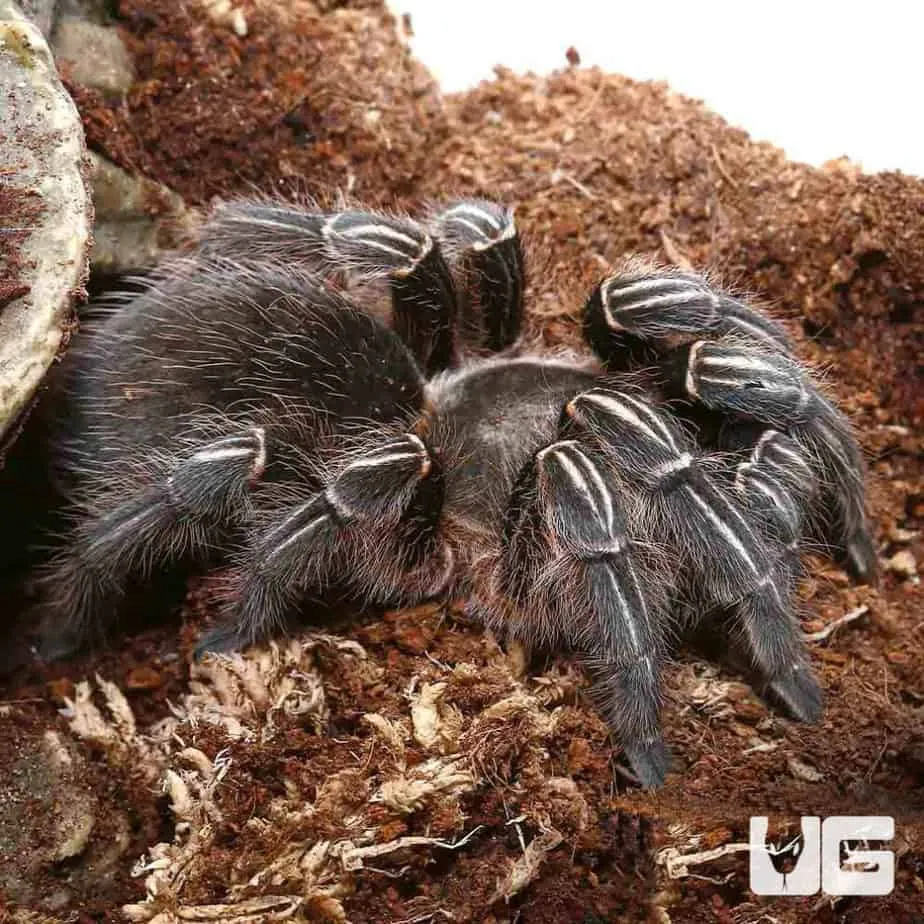
Avoid these common mistakes to ensure safe handling. Do not try to grab the tarantula or force it to move. Always let it come to you at its own pace. Never handle a tarantula if you are feeling stressed or rushed. Your stress can be transferred to the spider. Avoid handling a tarantula during molting or after it has recently molted. They are very vulnerable during this time. Do not use harsh chemicals or cleaning products near the tarantula’s enclosure. Always respect the tarantula’s space. Overhandling or improper handling can lead to injury or stress. Always prioritize the tarantula’s well-being by avoiding these mistakes. Be patient and treat the tarantula with respect.
In conclusion, handling a Stripe Knee Tarantula safely requires understanding its nature, careful preparation, and a gentle approach. By following the guidelines outlined in this article, you can minimize risks and enjoy a safe interaction with your pet. Remember to prioritize the tarantula’s well-being above all else, and always be patient and respectful. Handling is a privilege, not a right, and it should be approached with responsibility and care.
